IDIAP Presentation
November
24, 2005 |
a 25 year action research lab:
human cognition, communication, design
|
Note:
In November, 2005, I gave an informal talk followed by dialog and then me being given demonstrations of various works in progress at IDIAP [link: IDAP research institute].
It was both a pleasurable and enlightening visit.
I started this web article the afternoon before. My intention was to put my thoughts in this Article, supplemented with appropriate links to support material from my site and other sources, and use this to supplement my remarks. Unfortunately, at two in the morning a few hours before we were to start, I had a disk crash that left me without computer until I returned to the U.S.
I finished my notes, by hand, in my FUTURE VIEWS Notebook - see below - and used this to organize my remarks supported with pages from my web site which I tagged on their computer projector system prior to the talk.
What follows is a reconstruction and elaboration of my remarks and various topics that came up during the day.
Matt Taylor
December 22, 2005
|
|
|
page FV 16 November 24, 2005 |
click on graphic for full screen view |
| I have titled this talk 25 years of Action Research in a Living Lab because this best highlights two aspects of my work which frames what I wish to say to you based on my understanding of the nature of your work. First, that I am reporting experience - not untested theory. And, this experience is made of 25 years facilitating the learning and creative processes of a wide variety of people in collaborative environments that my associates and I have designed, built, equipped and operated by a patented process of our own invention. The tool kit utilized in these environments have been made up off-the-shelf computer and multimedia technology configured by us and employed to augment human cognition based on a model I conceived in the 1960s and that MG Taylor has further developed from the early 1980s onward. To highlight further this aspect of our work, the web page title of this Paper is As We May Think - a reference I am sure you are familiar with [link: vannevar bush in the atlantic monthly 1945]. |
| I choose the four graphics that make up the Masthead of this Paper because they illustrate key aspects of this experience: |
click on graphics for additional comments |
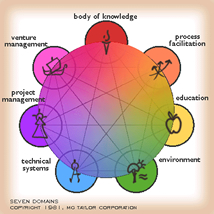 |
| We had to develop a number of new Models and definitions - terms of art - in order to precisely communicate what we were doing. Shown here is the 7 Domains Model which identifies the critical aspects that must be managed in a certain way in order to make the environment necessary for the creative organization. |
|
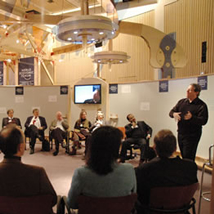 |
| The Taylor Method has been employed over 3,000 times with organizations of all kinds all over the world. It integrates the physical environment, work processes and technology in unique, “mind-like” ways to facilitate what we call “GroupGenius.” Leaders commonly report that they “got a years work done in less than a week.” |
|
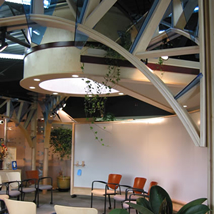 |
| The physical environment as “place-maker” is under rated in our society. in has to create “Strong Memory.” It must hold the energy of a diverse group of people from different cultures - all coming with different agendas. It must, in setting, shape, form and character adapt - minute by minute - to practical user requirements. |
|
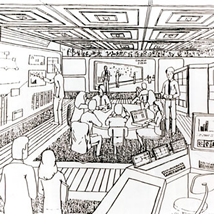 |
| This diagram of our 1982 technology vision illustrates the knowledge augmentation processes of the Taylor Method. We have employed “run, walk, run” methods by using “KnowledgeWorkers” and off-the-shelf technology, progressively automating long practiced work protocols which reflect the algorithms of the Method. |
|
| The primary method we have employed to achieve a greater integration of technology and collaborative - creative work, is what we call the 3 Cat Process. |
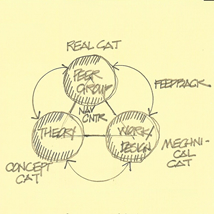 |
| The 3 Cat process is simple in concept and often challenging in practice. It requires a rigourous personal process and an even greater effort on the levels of team, group and organization |
|
| There is a strong tendency for specialized communities to “two-cat” according to the cognitive bias inherent in their work focus. Academics, for example are inclined to study the “real” cat and build a theoretical “concept” cat. They often ignore the learning inherent in making a “mechanical” cat. Craft and applied arts workers usually study the “real” cat thoroughly while applying what they observe to artifacts of various kinds. They have a habit of eschewing theory useless and, if you can judge from the common attitude, corrosive to the act of doing real work. |
|
|
|